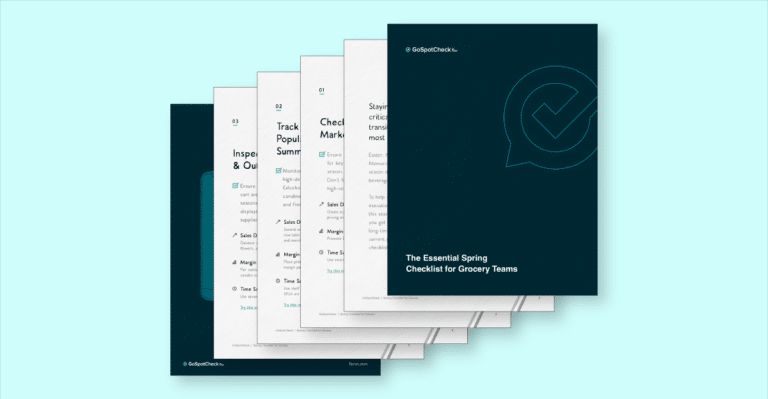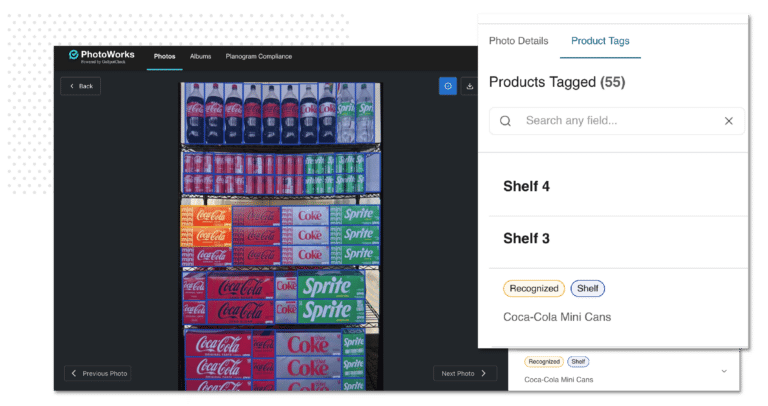Planning for FMCG Sales and Distribution
So, you want to drive sales on fast-moving consumer goods (FMCG). That’s great, but in order to bring your discount ideas to life, you need a proper promotional plan in place.
A promotional plan outlines how and when a supplier or distributor will offer price discounts on their products over the course of a year or quarter. The plan can be broken down into promotional periods (often two or four-week periods), with details about the types of promotions, SKU-level price discounts, and expected margin impact.
For FMCG suppliers, distributors, and retailers, promotional planning is an increasingly important factor when it comes to boosting sales volume and bringing in new business.
A major part of promotional planning is determining what types of deals you want to offer up to your customers. Promotional discounts can come in all shapes and sizes, so how do you know which ones are best for your business? Let’s take a closer look at the most common types of promotional discounts, and discuss how your business can begin crafting picture-perfect promotional plans that run smoothly from start to finish.
How to Create a Budget for a Promotion Plan
Right off the bat, you’ll want to consider what type of promotional discounts your business will offer. Determining the best course of action will require you to do some homework on your end, as choosing your promotional discounts will depend on the unique circumstances of your organization.
If you’re looking for some inspiration, let’s examine some of the most common types of discounts. This should help you get a sense of what will work best for you.
Types of Sales Promotions
- Off-Invoice Discount
- Manufacturer Chargeback
- Scanback
- Manufacturer Coupons
- Retailer Loyalty Programs
OFF INVOICE DISCOUNT (OI)
Off-Invoice discounts occur when brands offer a cost discount to the distributor directly on the invoice. Logistically speaking, this is the simplest model to follow for promotional discounts since this type of discount is applied at the distributor level. That means the discount will apply to any retailer for whom the distributor provides products.
Off-Invoice discounts are a great approach for brands who want to apply promotional discounts across a very wide audience base and can afford to do so. Let’s say you have a line of products that is highly seasonal, like gluten-free stuffing mix. Rolling out an Off-Invoice discount on this product in the weeks leading up to Thanksgiving will give your retailers the best chance at helping that stuffing mix fly off the shelves before the holiday arrives.
In short, Off-Invoice discounts can drive a high trial and sales volume across the market as a whole, so consider which products in your stores could work well for this type of offering.
MANUFACTURER CHARGEBACK (MCB)
Manufacturer Chargeback discounts, or MCGs for short, are similar to Off-Invoice discounts, but instead of the cost being taken directly off of the invoice, a rebate is offered from the supplier to the distributor. This rebate is reliant on how much product the retailer purchased during a certain promotional period. That discount is then passed on to the retailer, and ultimately to the customer.
MCG promotions also give suppliers the opportunity to reach multiple retailers at the same time, which means they tend to be slightly lower discounts that ultimately reach more customers.
In this model, distributors only receive a discount on the product that gets sold to retailers. Let’s work this into another example: If a distributor buys three pallets from a supplier, but only sells two pallets to retailers, they have bought one pallet at full price.
Because of this, distributors may pass discounts along to retailers at a different rate than they would when using the Off-Invoice model.
SCANBACK
In a Scanback model, a brand agrees to reimburse the retailer for a specific discount, agreed to in advance, for every item sold during a promotional period. This enables brands to be highly-targeted when it comes to thinking about which retailers they’re offering discounts to.
Suppliers that use this model generally have the ability to offer more substantial discounts. For example, in an Off-Invoice model, the supplier may offer a 15% discount to all retailers. But with the Scanback model, they may choose to offer a 30% discount to one retailer, and maybe only a 10% discount to a different retailer.
Scanback models tend to be best for suppliers who:
• Want to control their promotional budgets with precision
• Want to build strong partnerships with specific retailers
• Want to incentivize trial with a more targeted shopper segment
MANUFACTURER COUPONS
Manufacturer coupons are a way for suppliers to bypass the distributor and the retailer, and offer discounts directly to the customer. Manufacturer coupons can be distributed in a variety of ways based on the strategy of the brand.
For example, some brands may print coupons to be applied directly to their products on the shelves – this is a way to drive impulse buys at the point of purchase, and is often used as a competitive acquisition tactic. Let’s say a customer is shopping for barbecue sauce and sees three different bottles on the shelf, one of which has a coupon attached to it. Odds are, they’re going to try the product with a coupon as opposed to the other two options.
Alternatively, manufacturer coupons can be distributed outside of the four walls of retailers, like at community events or through direct mail. This can be an effective tool to build brand awareness and incentivize trials with potential customers who may not have heard of your product before.
RETAILER LOYALTY PROGRAMS
An increasingly popular method of offering discounts to customers, retailer loyalty programs are quickly becoming a go-to choice for all types of businesses. But how these programs are offered and who they’re offered to will look different depending on the business in question.
Big box grocers might offer their programs through a scannable card or after entry of a phone number. Other businesses are headed towards exclusively using mobile applications to host their loyalty programs. Ultimately, if you do decide to go the retailer loyalty program route, it’s simply about determining which model will work best for your business.
The big-box model, where a customer scans a card or enters a phone number at the register, is often referred to as a two-tier pricing model – which means that customers who use the program get different prices on items throughout the store than customers who do not use the program.
However, many loyalty programs now offer customized discount programs to customers based on geography, prior purchases, digital interactions, and more.
This means Customer A may have access to coupons for steak and ice cream, while Customer B may have access to coupons for tofu and spinach.
Suppliers can tap into these programs by partnering with the retailer and funding coupons to be hosted within the retailer’s loyalty program. Out of all the discounts we’ve discussed, this one is used the most. If you’re looking to offer discounts to a certain segment of customers who a certain product is most likely to resonate with, consider going with a loyalty program to pass off some great deals.
How to Create a Promo Calendar
Now you have an understanding of what types of promotional discounts you can take advantage of. So, how do you put everything together into a comprehensive and strategic plan that makes the best use of your promotional budget?
Let’s highlight some of the factors that should inform the direction you take your promotional calendar in.
IDENTIFY GEOGRAPHIC AREAS OF FOCUS
First, consider which retailers & locations are most important for the growth of your brand right now. Think about how quickly you want to scale, and which markets you typically perform the best within. Retailers tend to focus on new products within certain clusters of stores with geographic proximity first, so you might choose to focus your efforts near an urban center, where several stores are likely clustered near each other. Looking to be more methodical with your focus? Focus on suburban or rural areas first that tend to have fewer stores clustered nearby. Consider how your full program works as a whole – if you are offering promotional discounts in suburban areas, what other marketing promotions are you coordinating in those same areas?
IDENTIFY STRATEGIC ACCOUNTS
Next, think about strategic retailer accounts and how you’d like to see them evolve down the road. Are there strategic accounts that you want to focus on to set yourself up for success at other accounts? For example, let’s say Retailer B tends to pick up products only after Retailer A does. If that’s the case, consider investing heavily in promotional activities for Retailer A to help expand your overall market share.
You may also opt to evaluate account-specific shelf positioning across retailers. Shelf positioning is most often based on historical sales, so if you want to improve inline shelf-positioning at Retailer A next year, invest more heavily in promotional activities at Retailer A this year. If you are happy with your shelf position at Retailer B, consider investing less heavily there and relying on your shelf position to drive sales.
DEVELOP ACCOUNT-SPECIFIC SHELF POSITIONING PLANS
You may also opt to evaluate account-specific shelf positioning across retailers. Shelf positioning is most often based on historical sales, so if you want to improve inline shelf-positioning at Retailer A next year, invest more heavily in promotional activities at Retailer A this year. If you are happy with your shelf position at Retailer B, consider investing less heavily there and relying on your shelf position to drive sales.
IDENTIFY HOLIDAY EVENTS THAT IMPACT YOUR PLANNING
‘Tis the season to think about your products. Are they highly seasonal and designed to be the perfect product for a specific holiday (like Gingerbread Houses)? Or is it an everyday item that is generally unaffected by holidays (Like spices)? Maybe they fall somewhere in between?
Your answers will have a big impact on how you balance your promotional budget throughout the year. Some items might require as much as 75% of your promotional budget, causing other resources to be devoted to one promotional period. Other products may require you to spread out the budget more evenly throughout the year.
Work closely with your finance team to ensure that your budget is forecast at the right time of year to support your strategy, and be sure to centralize your promotional spending around user habits.
CONSIDER YOUR THRESHOLDS FOR DISCOUNTS THROUGHOUT THE YEAR
Most often, shoppers appreciate familiarity – grocery shopping and purchasing patterns become a habit for most people. Think about how a customer makes decisions while they shop when putting together your promotional strategy. It is likely that a strategy that puts a focus on consistency of discount thresholds will be one that resonates best with shoppers. For example, if you run a discount for 50% off the full line in August, and then run a second promotion for 15% off in September, chances are that the 15% off discount won’t look very enticing since customers have seen it at 50% off. But, if you run discounts for 25% off every other month throughout the year, shoppers will get in the habit of looking for that discount each time.
Of course, every promotional plan is different, and there are certainly situations when this approach is not the best option, but it is generally a good starting point for your planning.
Put Your Promotional Plan into Action
Promotional planning for an FMCG supplier or distributor doesn’t just affect sales volume and customer sentiment towards your products. It also has a big impact on your relationship with retailers. An organized and well-thought-out plan that is communicated properly from the get-go will help build strong partnerships with retailers far and wide.
Giving thought to promotional planning is especially important when launching a brand new product. For more on launching a new product into retail, read our article here.
With the right promotional plan at the ready, you can start to immediately drive more sales throughout the year, and gradually improve customer loyalty and retailer relationships over time. Learn more about how GoSpotCheck by FORM helps field sales teams confirm execution in retail here.




